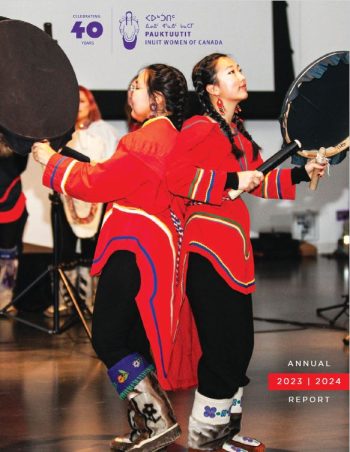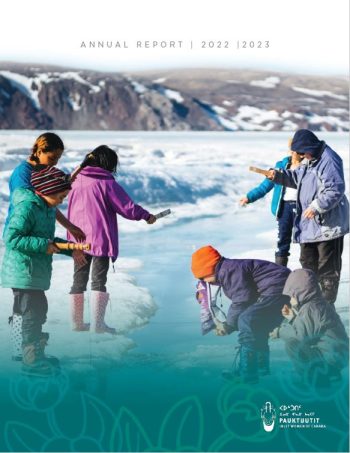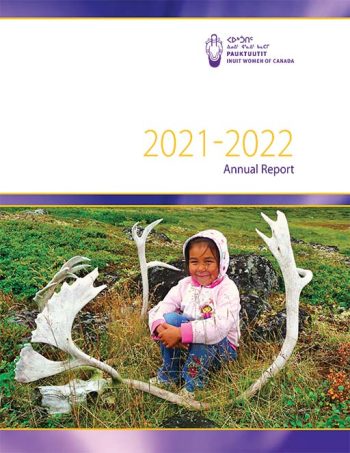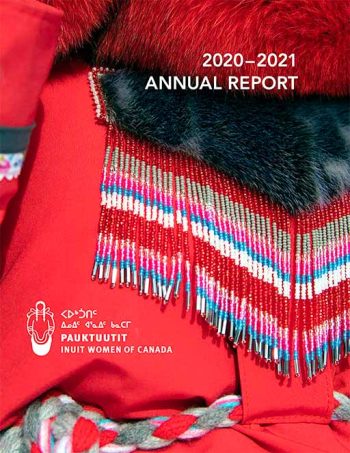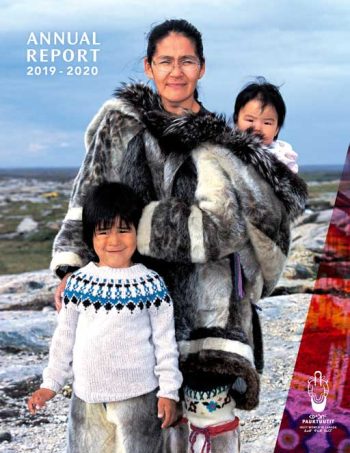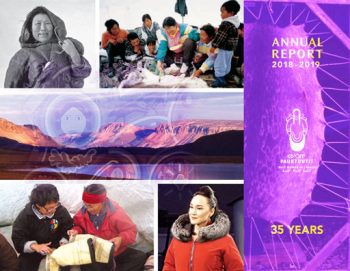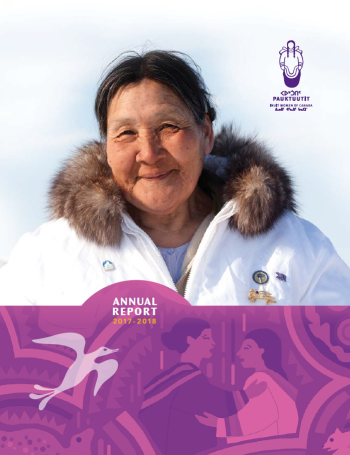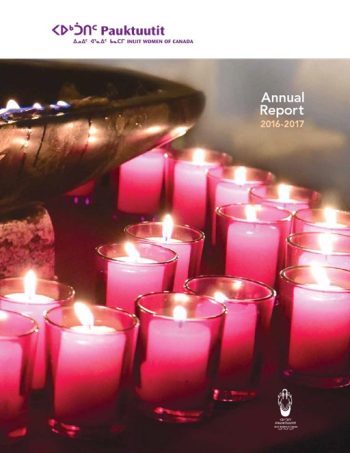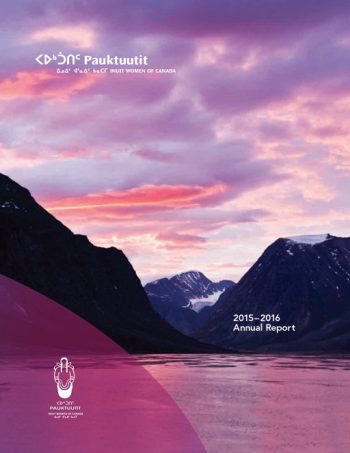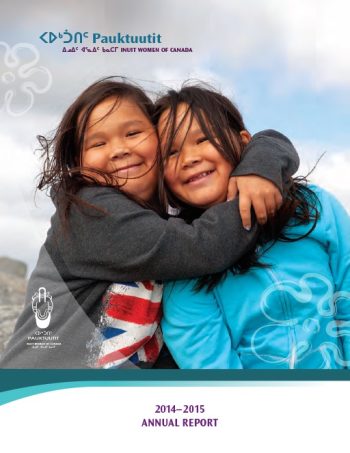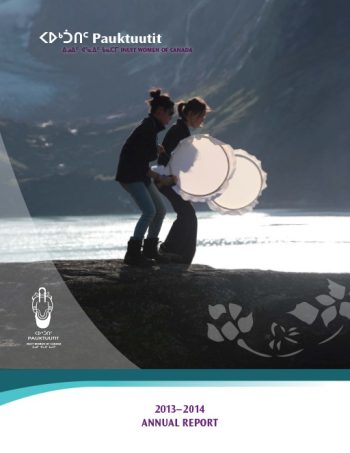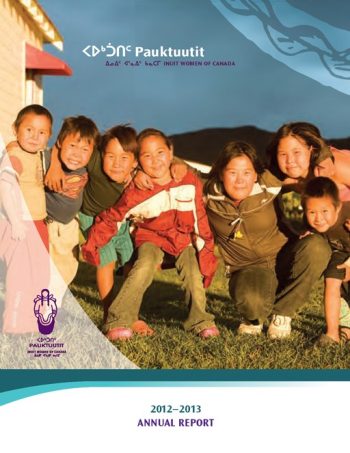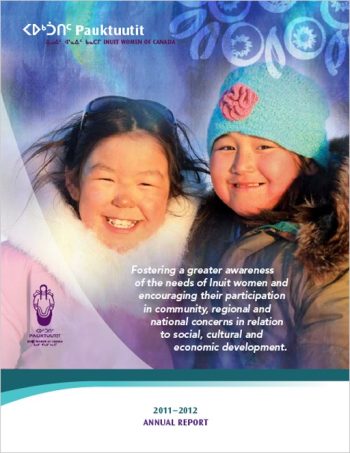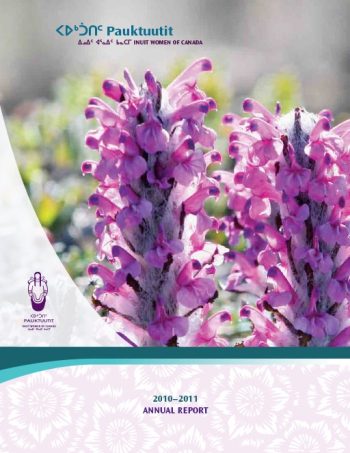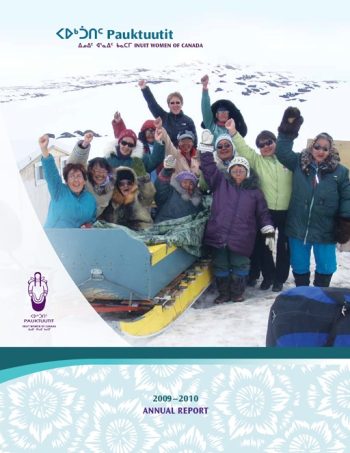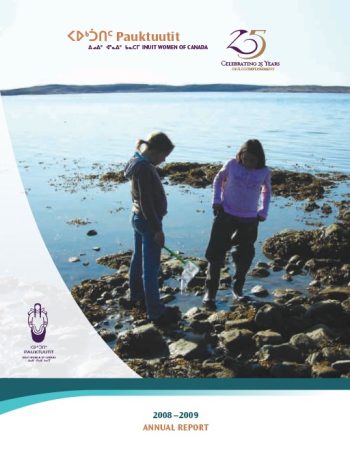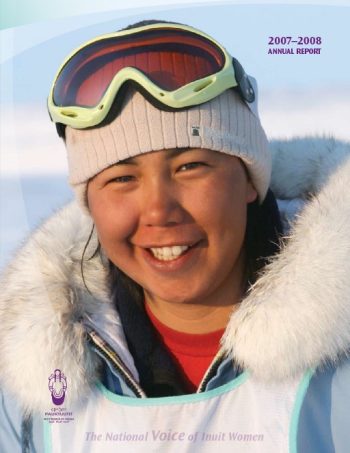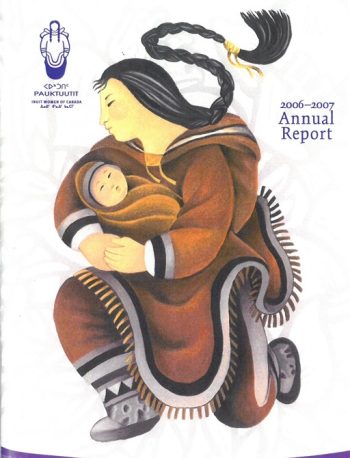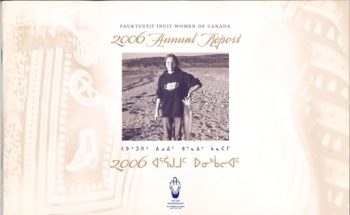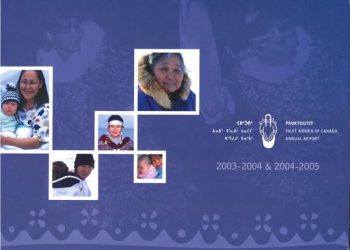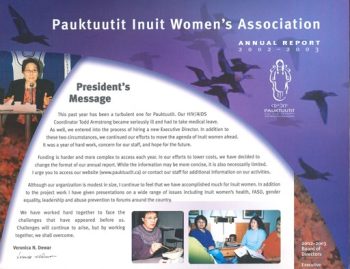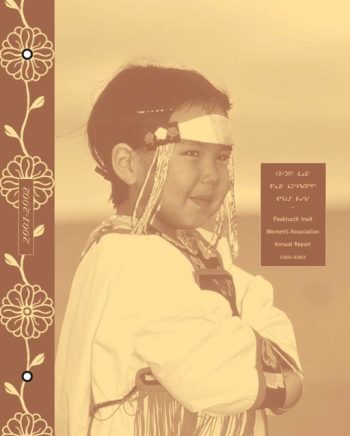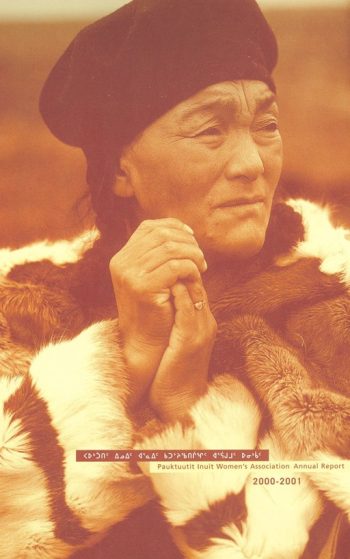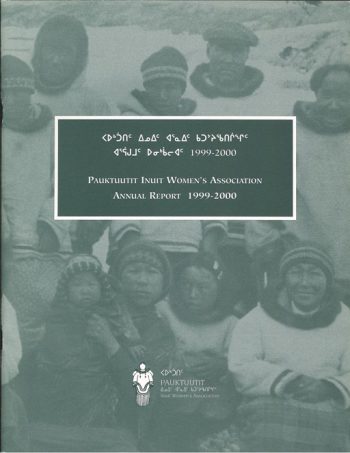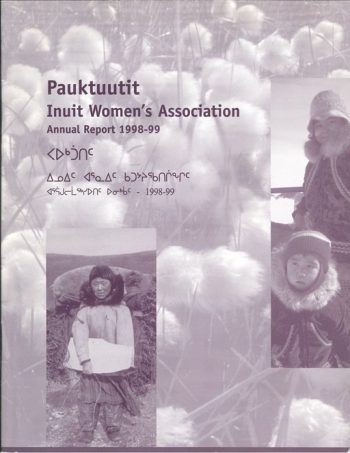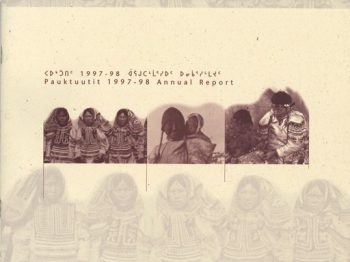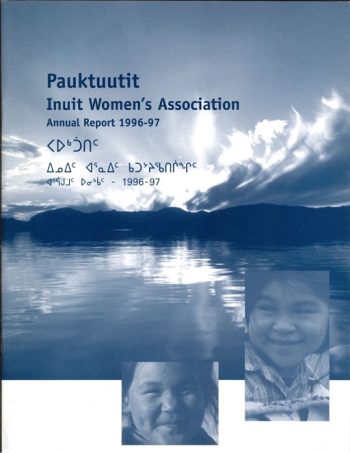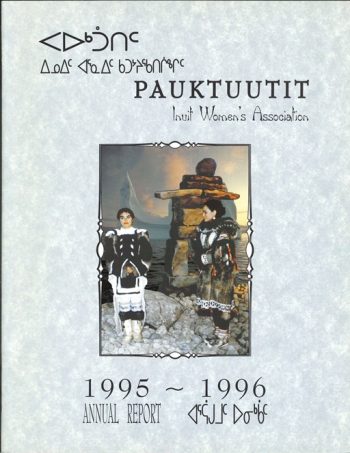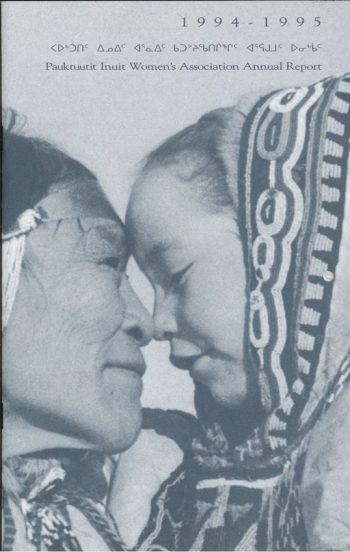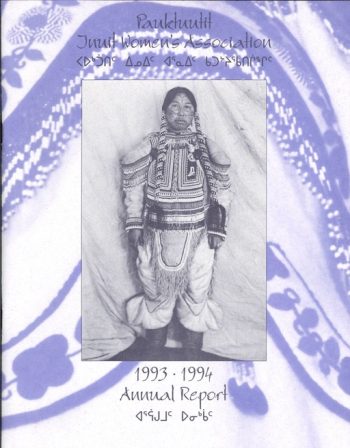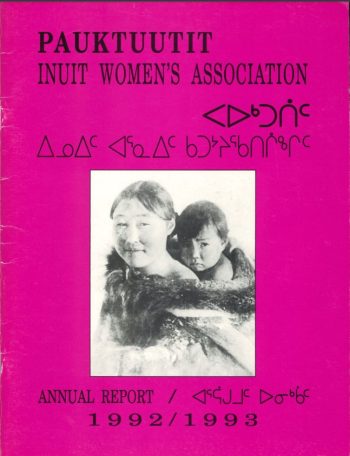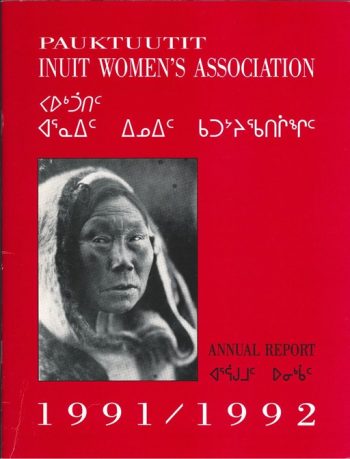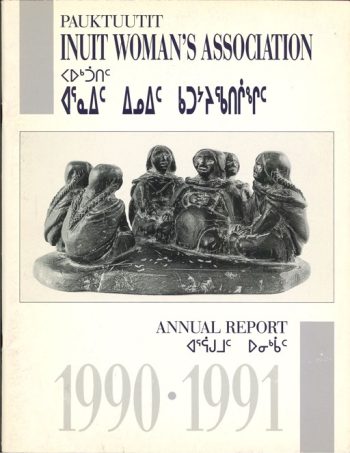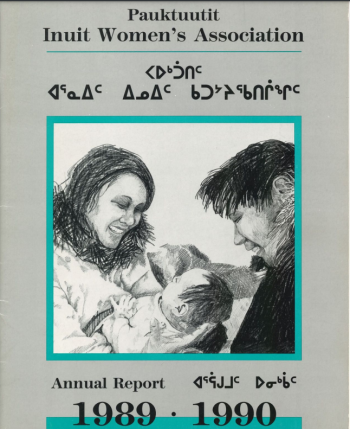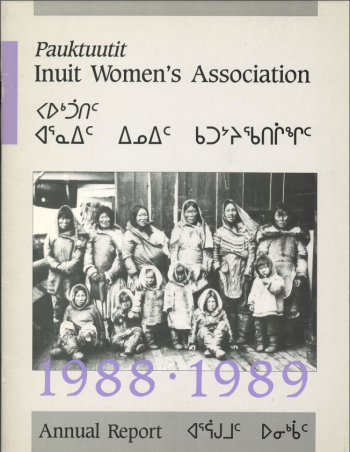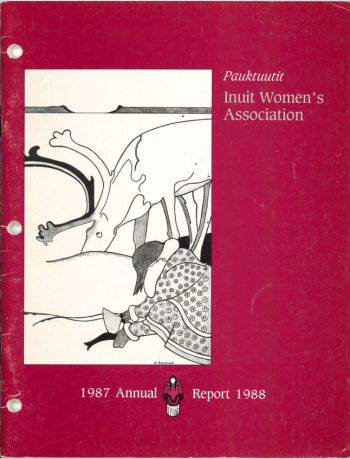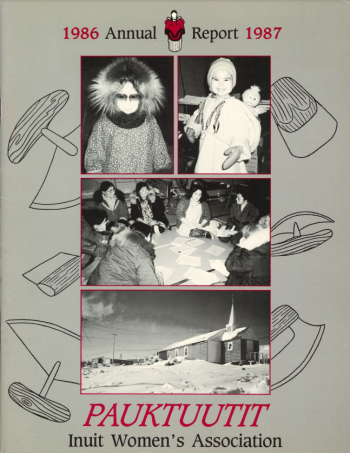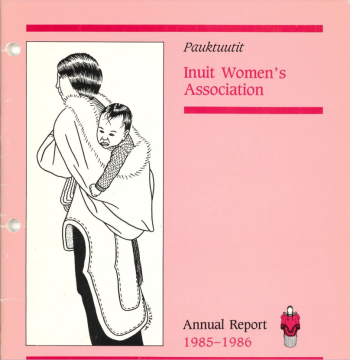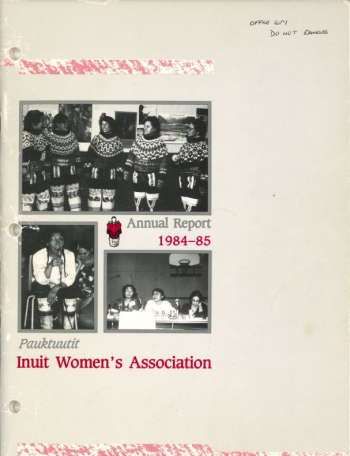Publications
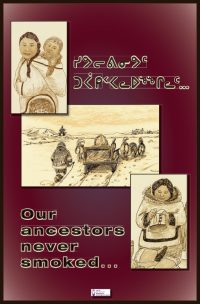
Our Ancestors Never Smoked Poster
Part 1 of this book contains short quotations from Elders’ interviews divided into key themes that emerged from the interviews.
In Part 2, we present each Elder’s complete interview. The interviews from Puvirnituq were conducted in Inuktitut and appear here in both Inuktitut (Nunavik dialect) and English. Those from Aklavik, on the other hand, were conducted in English and appear here in English only.
https://pauktuutit.ca/wp-content/uploads/OurAncestorsNeverSmokedposter.pdf
Year Published 2005
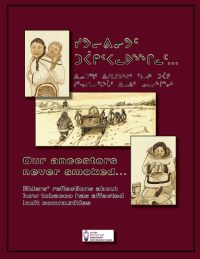
Our Ancestors Never Smoked Book
Part 1 of this book contains short quotations from Elders’ interviews divided into key themes that emerged from the interviews.
In Part 2, we present each Elder’s complete interview. The interviews from Puvirnituq were conducted in Inuktitut and appear here in both Inuktitut (Nunavik dialect) and English. Those from Aklavik, on the other hand, were conducted in English and appear here in English only.
https://pauktuutit.s3.ca-central-1.amazonaws.com/Our-Ancestors-Never-Smoked-book.pdf
Year Published 2005
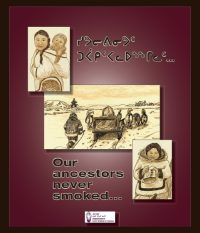
Our Ancestors Never Smoked Flipchart
Part 1 of this book contains short quotations from Elders’ interviews divided into key themes that emerged from the interviews.
In Part 2, we present each Elder’s complete interview. The interviews from Puvirnituq were conducted in Inuktitut and appear here in both Inuktitut (Nunavik dialect) and English. Those from Aklavik, on the other hand, were conducted in English and appear here in English only.
https://pauktuutit.ca/wp-content/uploads/OurAncestorsNeverSmokedflipchart.pdf
Year Published 2005
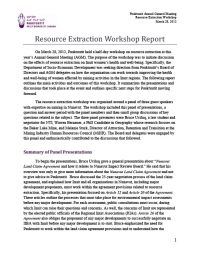
Resource Extraction Workshop Report
This research report is the second of two documents dealing with the social impacts of mining activity near Qamani’tuaq (Baker Lake) on Inuit women and families in the community. The first report (March 2014) was based on interviews and qualitative data. This report deals with results of a questionnaire, with content developed in 2013 by Inuit women of Qamani’tuaq in the course of a week-long workshop.
https://pauktuutit.ca/wp-content/uploads/Resource-Extraction-Workshop-Report.pdf
Year Published 2005
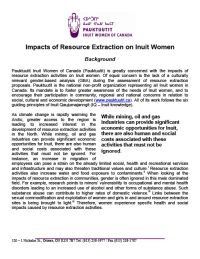
Impacts of Resource Extraction on Inuit Women Fact Sheet
This research report is the second of two documents dealing with the social impacts of mining activity near Qamani’tuaq (Baker Lake) on Inuit women and families in the community. The first report (March 2014) was based on interviews and qualitative data. This report deals with results of a questionnaire, with content developed in 2013 by Inuit women of Qamani’tuaq in the course of a week-long workshop.
https://pauktuutit.ca/wp-content/uploads/08-Mining-Fact-Sheet_EN.pdf
Year Published 2005
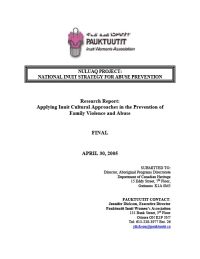
Research Report: Applying Inuit Cultural Approaches in the Prevention of Family Violence and Abuse
Pauktuutit undertook this two year project to provide Inuit women with resources that promote leadership and personal wellness as tools to address family violence. This project also facilitated knowledge exchange and communication between elders and youth to develop a shared leadership role in the reduction of all forms of abuse and family violence in their communities. Through on-the-land workshops and youth and elder workshops, Pauktuutit was able to create two models to help communities create safe environments for women and girls to participate in healing and leadership opportunities.
https://pauktuutit.ca/wp-content/uploads/InuitAbusePrevention_e.pdf
Year Published 2005
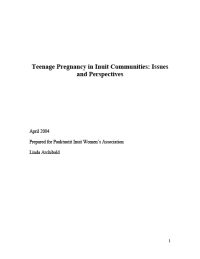
Teenage Pregnancy in Inuit Communities: Issues and Perspectives – Report
If you are not going to have your baby at home, it is a good idea to pack a bag to take with you. Pack the bag well in advance of your expected due date. Some things you will need include a housecoat, loose nightgown, a nursing bra, slippers, several pairs of underwear, comb or brush, make-up, clothes to wear home, clothes, diapers and a blanket for the baby. Make sure you have phone numbers of people you will want to get a hold of—friends, relatives, midwives, health care provider etc.
https://pauktuutit.ca/wp-content/uploads/TeenPregnancy_e.pdf
Year Published 2004
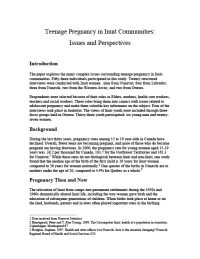
Teenage Pregnancy in Inuit Communities: Issues and Perspectives – Executive Summary
If you are not going to have your baby at home, it is a good idea to pack a bag to take with you. Pack the bag well in advance of your expected due date. Some things you will need include a housecoat, loose nightgown, a nursing bra, slippers, several pairs of underwear, comb or brush, make-up, clothes to wear home, clothes, diapers and a blanket for the baby. Make sure you have phone numbers of people you will want to get a hold of—friends, relatives, midwives, health care provider etc.
https://pauktuutit.ca/wp-content/uploads/TeenPregnancySummary_e.pdf
Year Published 2004
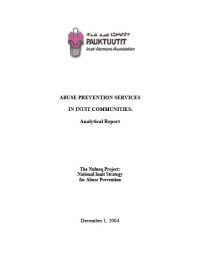
Abuse Prevention Services in Inuit Communities
Pauktuutit undertook this two year project to provide Inuit women with resources that promote leadership and personal wellness as tools to address family violence. This project also facilitated knowledge exchange and communication between elders and youth to develop a shared leadership role in the reduction of all forms of abuse and family violence in their communities. Through on-the-land workshops and youth and elder workshops, Pauktuutit was able to create two models to help communities create safe environments for women and girls to participate in healing and leadership opportunities.
https://pauktuutit.ca/wp-content/uploads/AbusePreventionServices_e.pdf
Year Published 2004
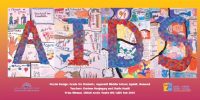
Puzzle Design
Pauktuutit’s sexual health program began in the late 1980’s when news of the first Inuk woman diagnosed with HIV became public. Pauktuutit first passed a resolution during its 1984 Annual General Meetings (AGM) calling attention to Inuit sexual health issues and to the need for information and educational materials on sexual health that met the needs of Inuit communities. Later, in 1990, an AGM resolution called for an AIDS workshop in the North. In May 1995, Pauktuutit conducted the first National Inuit HIV/AIDS and Sexually Transmitted Infections Workshop, which served to raise awareness among Community Health Representatives (CHRs) about the issues and risk behaviours associated with HIV/AIDS and STIs. In 1998, with financial support from Health Canada, Pauktuutit began a pan-Arctic HIV/AIDS health prevention and promotion program that produced and distributed HIV/AIDS-related materials in English and Inuktitut. Pauktuutit remains the only national organization focusing on specific Inuit HIV/AIDS issues and initiatives, and has gained national and international recognition and acclaim for its innovative and unique work.
https://pauktuutit.ca/wp-content/uploads/puzzle.pdf
Year Published 2001
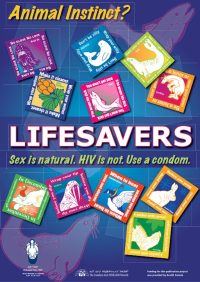
Condom Poster
Pauktuutit’s sexual health program began in the late 1980’s when news of the first Inuk woman diagnosed with HIV became public. Pauktuutit first passed a resolution during its 1984 Annual General Meetings (AGM) calling attention to Inuit sexual health issues and to the need for information and educational materials on sexual health that met the needs of Inuit communities. Later, in 1990, an AGM resolution called for an AIDS workshop in the North. In May 1995, Pauktuutit conducted the first National Inuit HIV/AIDS and Sexually Transmitted Infections Workshop, which served to raise awareness among Community Health Representatives (CHRs) about the issues and risk behaviours associated with HIV/AIDS and STIs. In 1998, with financial support from Health Canada, Pauktuutit began a pan-Arctic HIV/AIDS health prevention and promotion program that produced and distributed HIV/AIDS-related materials in English and Inuktitut. Pauktuutit remains the only national organization focusing on specific Inuit HIV/AIDS issues and initiatives, and has gained national and international recognition and acclaim for its innovative and unique work.
https://pauktuutit.ca/wp-content/uploads/condom_poster.pdf
Year Published 2001
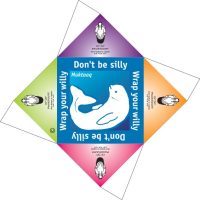
Condom cover – Muktaaq
Pauktuutit’s sexual health program began in the late 1980’s when news of the first Inuk woman diagnosed with HIV became public. Pauktuutit first passed a resolution during its 1984 Annual General Meetings (AGM) calling attention to Inuit sexual health issues and to the need for information and educational materials on sexual health that met the needs of Inuit communities. Later, in 1990, an AGM resolution called for an AIDS workshop in the North. In May 1995, Pauktuutit conducted the first National Inuit HIV/AIDS and Sexually Transmitted Infections Workshop, which served to raise awareness among Community Health Representatives (CHRs) about the issues and risk behaviours associated with HIV/AIDS and STIs. In 1998, with financial support from Health Canada, Pauktuutit began a pan-Arctic HIV/AIDS health prevention and promotion program that produced and distributed HIV/AIDS-related materials in English and Inuktitut. Pauktuutit remains the only national organization focusing on specific Inuit HIV/AIDS issues and initiatives, and has gained national and international recognition and acclaim for its innovative and unique work.
https://pauktuutit.ca/wp-content/uploads/CondomCover_Muktaaq.pdf
Year Published 2001
